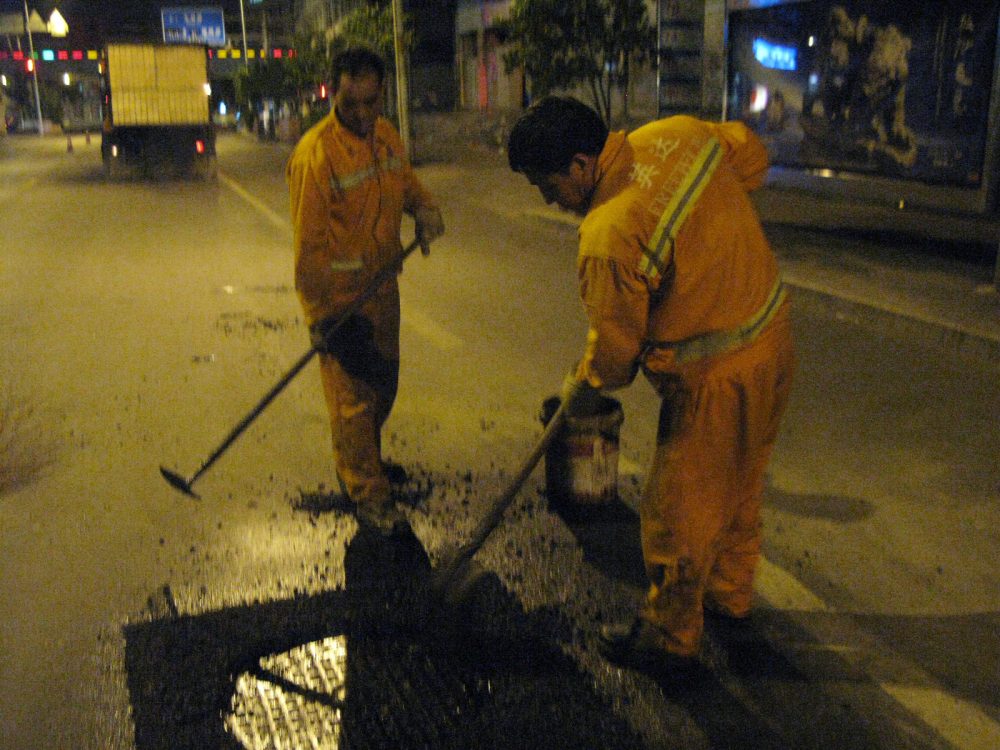Freetech Patching Vehicle proves a quick solution for Manhole Patching
In China, two Freetech Patching Vehicles have proven themselves in revolutionising manhole repairs.
As much as they introduce potential dangers to cyclists and motorcyclists, and generate excessive noise and discomfort for passenger vehicles, cracks around manholes have really annoyed China’s City Councils.
Traditional Repair Method
The traditional method of repairing manholes is by sawing and breaking the asphalt pavement surface around the manhole, and refilling with new asphalt material. Councils have been using construction gangs of 50 workers to repair 60 to 70 manholes in a night shift. As the asphalt around the manholes is thin, cracks reoccur quickly after repairs using the traditional Chinese method.
Traditional repairing methods do not allow for adequate compaction, and this forms a homogenous entity around the manhole, which is not bonded to the road bed, leading to weak joints. Passage of vehicles rubs and vibrates the area which generates further cracks, which let rain permeate through the surface to cause road defects.
Sometimes in bad weather defects cannot be repaired immediately, so roads had to be blocked off, which proved unpopular with motorists and caused huge traffic delays.
Revolutionary Repair Method
To overcome the problems faced by the City Councils, Freetech introduced their Patching Vehicle, which just heats up the area around the manhole, softening the asphalt for easier scarifying. After spraying emulsified asphalt and adding a small amount of new hot mix asphalt, and then manual levelling, workers can compact the surface. It takes about 20 minutes to finish a job.
Freetech Hot-In-Place Recycling Technology allows thermal bonding between new and old materials to form a strong and well bonded patch, with no weak joints or interface, so higher shear strength is achieved.

The quality and efficiency of the manhole repairs has satisfied the City Council and the city drivers.
























